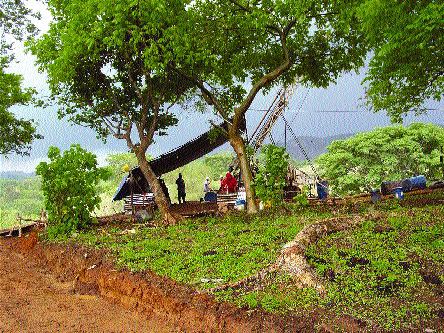Vancouver — A prefeasibility study by
The study, which focused on the Minita deposit, predicts annual gold-quivalent production of 80,500 oz. At gold and silver prices of US$400 and US$6 per oz., respectively, the mine would generate US$41.6 million in revenue over a lifespan of 6.2 years. Payback is pegged at 3.5 years.
Costs are estimated at US$140 per oz. in the first two years of production and at US$163 per oz. over the life of the mine.
The prefeasibility study is based on an independent resource estimate of 1.5 million tonnes averaging 11.4 grams gold and 71.7 grams silver per tonne at a cutoff of 5 grams gold.
Minita has proven and probable reserves of 1.6 million tonnes averaging 9.51 grams gold and 60.82 grams silver, or 490,758 oz. gold and 3.1 million oz. silver (537,828 oz. gold-equivalent).
The project would cost US$49.4 million before production and US$19.4 million after startup.
The mine would process an average of 750 tonnes per day. Plans call for ore to be crushed, then reduced further in a ball mill, followed by cyanide leaching in tanks and metal recovery in a Merrill-Crowe circuit.
Recoveries of 92% for gold and 88.3% for silver are expected.
The prefeasibility study does not include results from drilling at the recently discovered South Minita and Nance Dulce gold zones. A resource estimate for South Minita is expected by mid-2005.
The Minita deposit occurs in a steeply dipping vein measuring 3.2 metres wide, which would be mined using bench-and-fill, blasthole stoping with continuous backfill.
Meanwhile, Pacific Rim is selling its dormant Andacollo gold mine in central Chile for US$5 million to an unnamed buyer. Pacific Rim’s predecessor, Dayton Mining, shut down Andacollo in December 2000. Proceeds will be applied to drilling at South Minita.


Be the first to comment on "Study calls for mining at Minita"